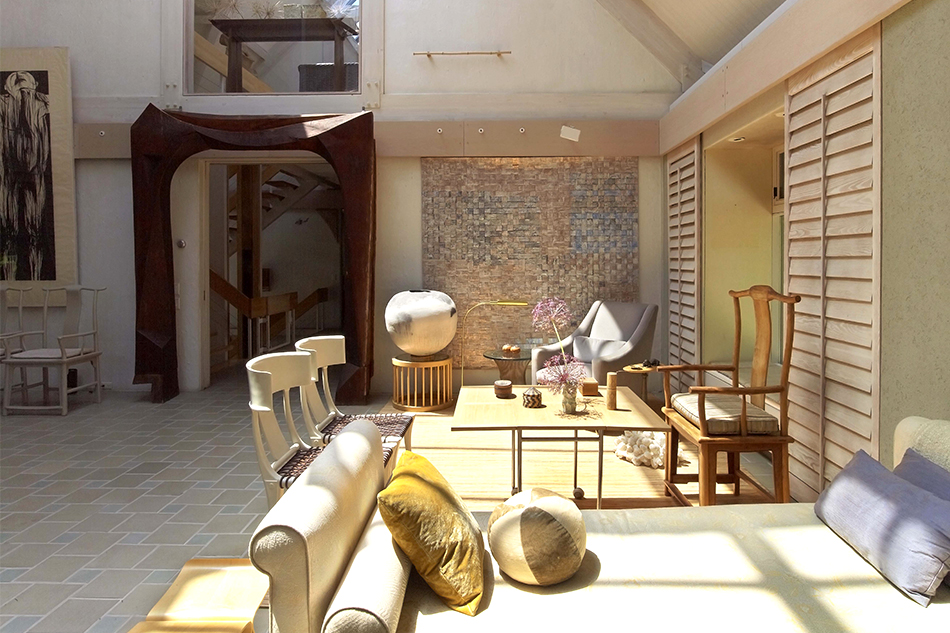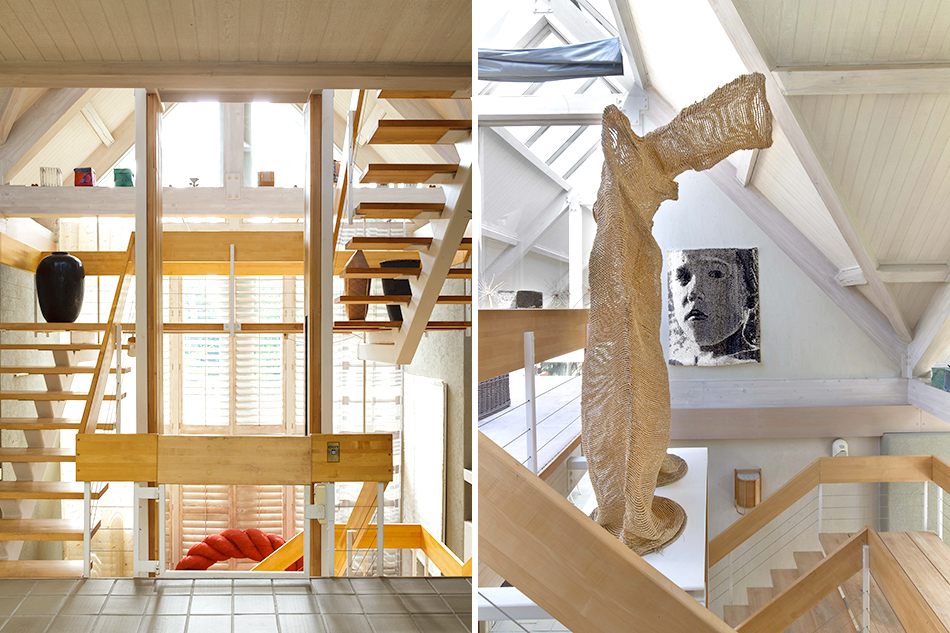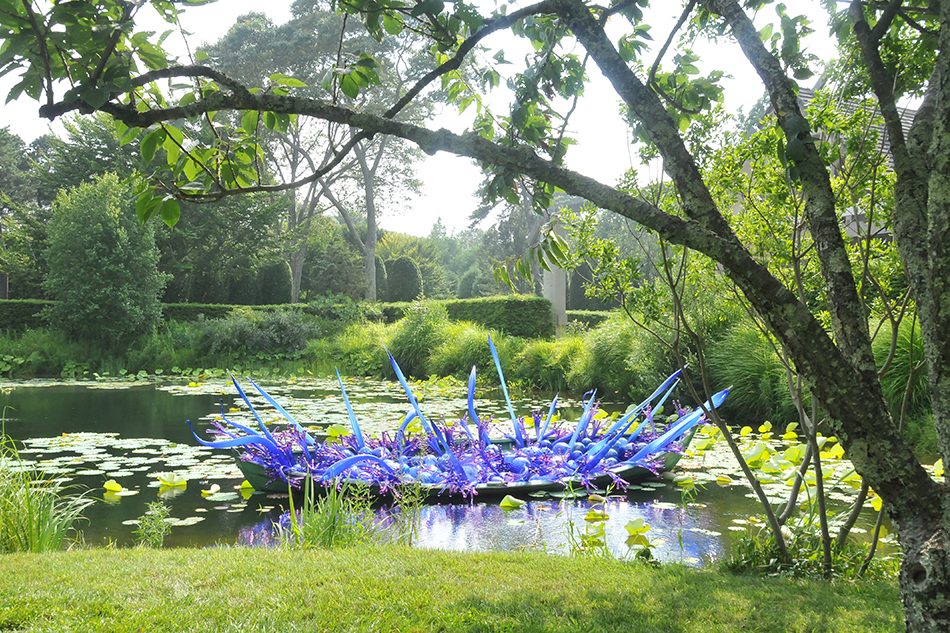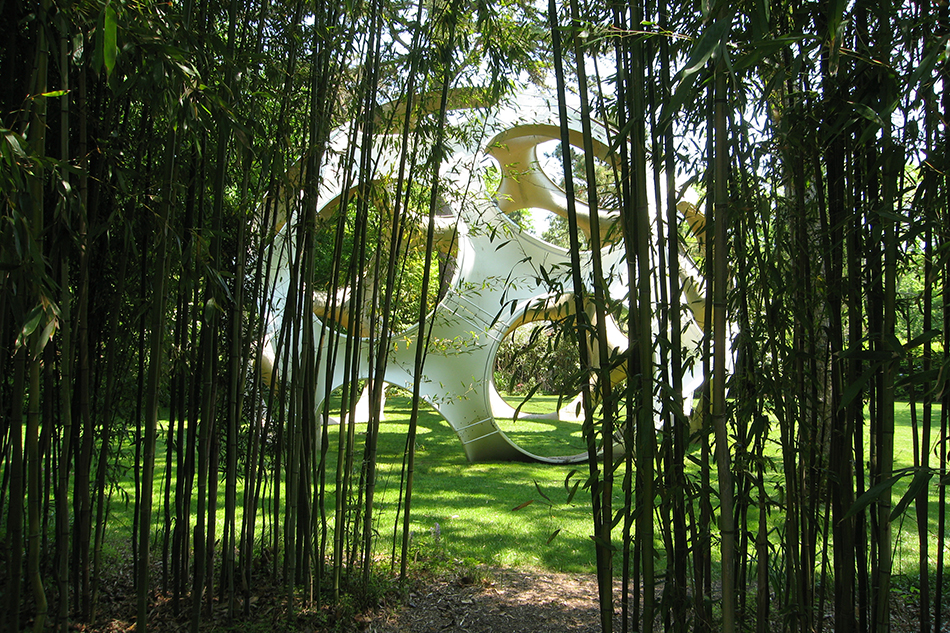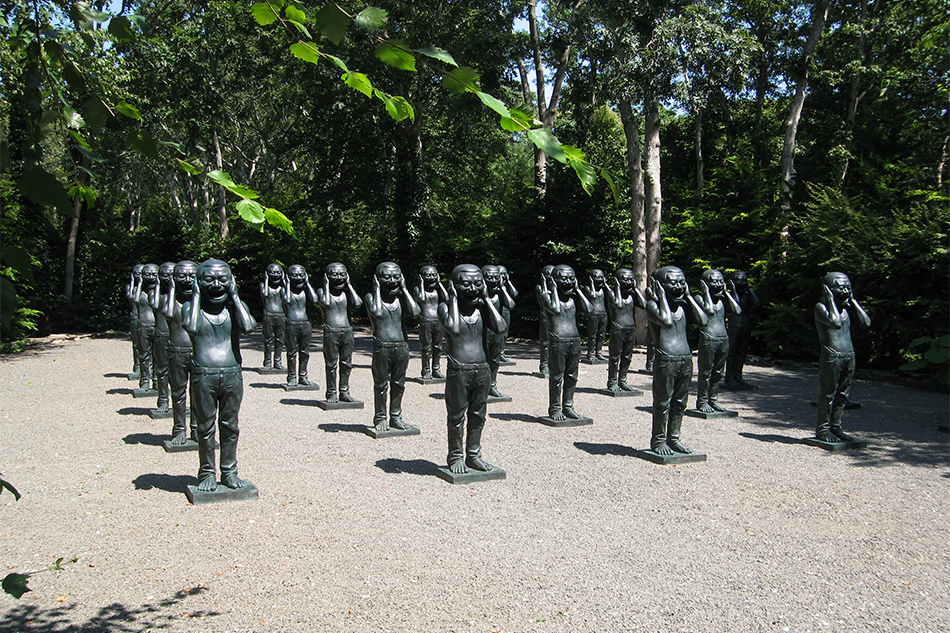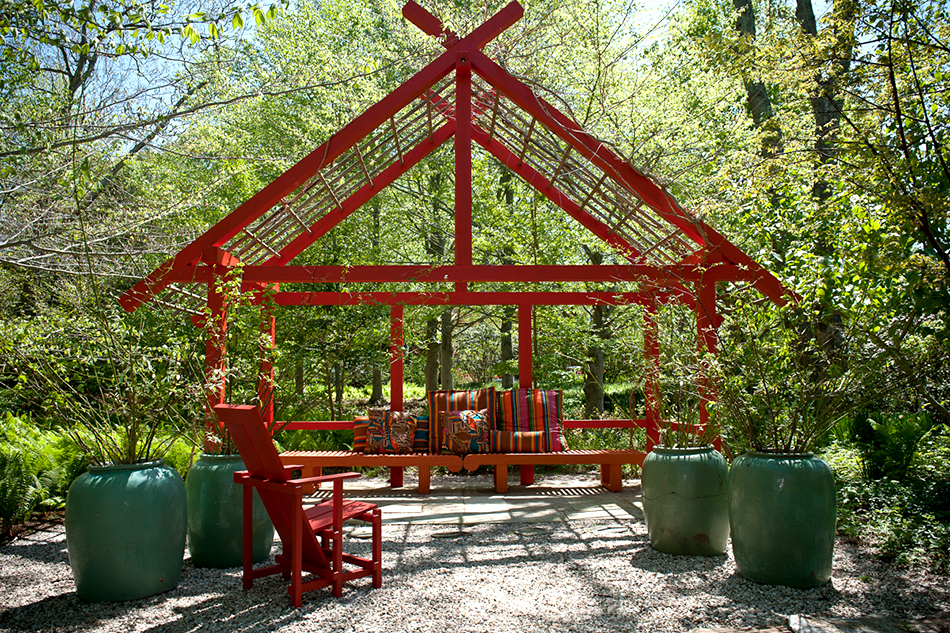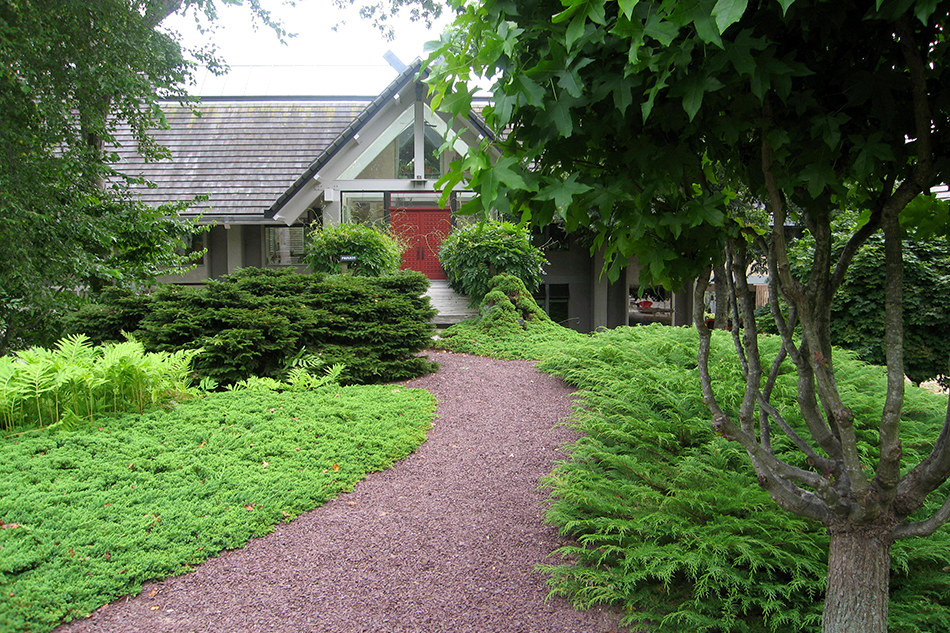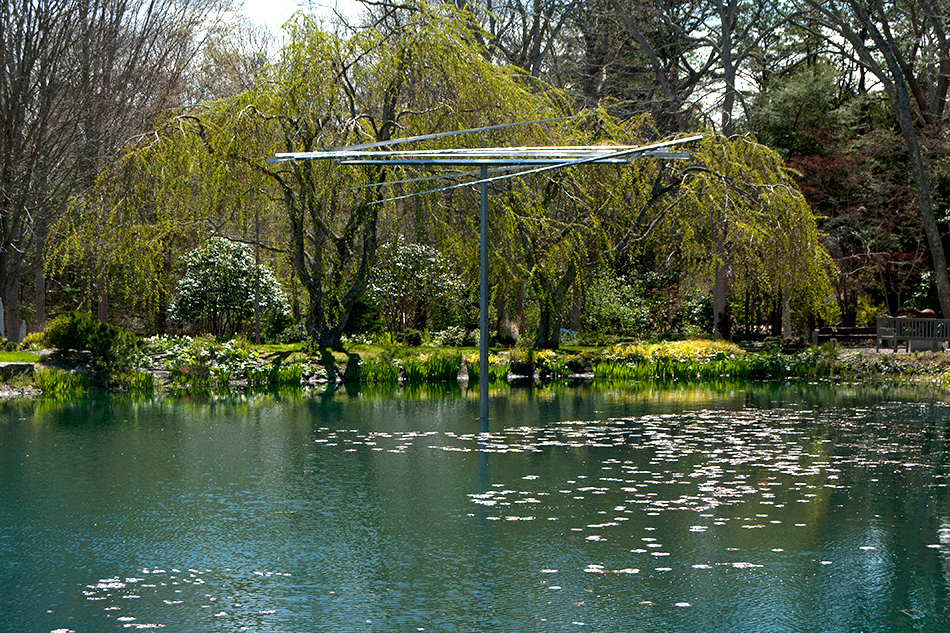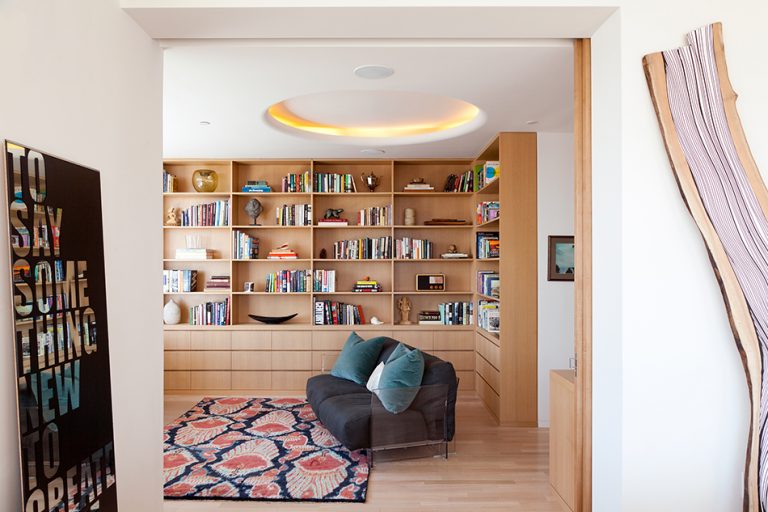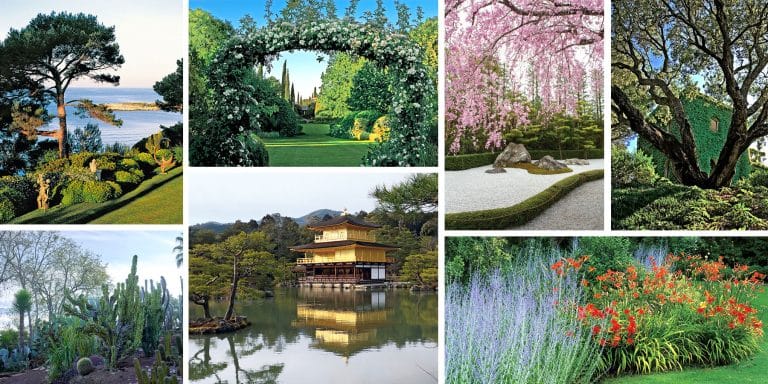
August 1, 2016In his new book, Learning from LongHouse, legendary textile designer Jack Lenor Larsen offers a look inside his East Hampton, New York, home and gardens (portrait by Paul Godwin). Top: Peter’s Pond, located behind the house, is filled with waterlilies during the summer. Photo by Eric Laignel
Jack Lenor Larsen, now 89 years old, is a living legend in the world of design. An architecture student turned weaver and textile designer, he introduced such techniques as ikat and batik into the American market, and his influential eponymous design company, recognized for its muted hand-spun textured textiles, has manufactured fabrics all over the world for more than six decades, using both traditional and modern weaving techniques. Larsen is an inveterate traveler who, by his accounting, has visited and worked in 57 countries. What he’s learned during those trips about indigenous textiles and craftsmanship has profoundly influenced not only his business but also his worldview and lifestyle.
Nowhere is this more evident than at LongHouse Reserve, his house in East Hampton, New York, which he built in collaboration with the architect Charles Forberg, with whom he had previously worked on numerous showrooms, exhibition displays and interiors. Built on four levels and raised on stilts, the house covers 13,000 square feet and was completed in 1992 after five years of construction. Larsen always intended it to ultimately serve as a museum for his fabrics and his collections of historical and contemporary crafts. To that end, he set up LongHouse Reserve as a foundation, which includes the surrounding 16-acre sculpture garden. With its more than 60 works of art, flowering trees, ornamental grasses and other perennials — plus hundreds of thousands of daffodils — the garden is open to the public for 10 months of every year.
Larsen’s account of what went into the creation of this house as well as its surrounding gardens is the subject of his recently published Learning from LongHouse (Pointed Leaf Press) — his 12th book “and probably my most personal one,” he admits.

The gatehouse at the front of the gardens is crowned with “white dawn” climbing roses. Photo by Joanne Sohn
Given the book’s title, it seems fair to first ask you what did you learn from the process of creating your iconic home and garden.
The building was my thirtieth project with Charles Forberg. It was very much influenced by my frequent trips to Japan, where I learnt about the value of having wasted space in a house and the practicality of free-flowing space infused with light at all times of the day. The design was inspired by the Ise Shrine in Japan. I didn’t want the place to seem old or new. I was looking for it to be personal, accommodating and to express a sense of scale, structure and materials. In other words, a building that would be open and comfortable as well as functional.
What would you like people to take away from their visits to LongHouse?
Americans tend to be so conformist in their thinking about space, so I want them to understand that a house can be innovative and unconventional, while at the same time being practical and low maintenance. For instance, in this house, the windows are protected from the sun by massive eaves, the tile floors are impervious to gardeners’ boots, and the high ceilings, sometimes reaching twenty-five feet, allow for maximum light at all times of the year.
How did you go about designing the gardens, and was this process different from that of building the house?
There was no grand plan with the garden. It all evolved very naturally, and I was always making decisions as the work progressed. From the beginning, I wanted it to be a public garden, and I was very much influenced by the free-flowing spaces of Japanese gardens. I learnt that I could be even less conventional in making a garden than in designing a house. I also found that it takes far longer. My garden making has always been very practical, and the key to it has been to buy plants and trees small and early. Small trees are quite affordable: My vast hedges of yew began life as plants costing ten cents each.

Playing It by Trust, by Yoko Ono, a conceptual work of all-white chess pieces, transforms the war-themed game into a metaphor for hope. Photo by Robert Dutesco
As a weaver, you discovered that the structure of textiles depends on materials with highlight and shadow. Would you agree that this realization has played a role in your gardening decisions?
Absolutely. I wanted a garden that would embrace all four seasons. And from the beginning, I wanted it to be a sculpture garden — sculpture looks so much better out of doors precisely because it responds to the changes in light and shade, forms strong focal points and anchors vistas. I have always tried to represent a broad range of media, scale and subject in what I show in the garden. Visitors can see works by artists as diverse as Willem de Kooning, Grace Knowlton, Lynda Benglis, Eric Fischl, Sol LeWitt and Dale Chihuly. Many of the works here are on loan, and this allows us much more variety in what we can show. At the moment, I am trying to raise the money to buy a marvelous piece by George Rickey that is currently on loan. I want it to stay here forever.
What else are you working on?
I am creating a large moss garden that will be in the southwest corner of the garden. I have also begun my next book, which is about some of the amazing friends I have known over the years, from Frank Lloyd Wright to Marilyn Monroe, who was a client of mine. I am a happy old man and already looking forward to my ninetieth birthday next year. That’s going to be one big celebration!
PURCHASE THIS BOOK
or support your local bookstore

